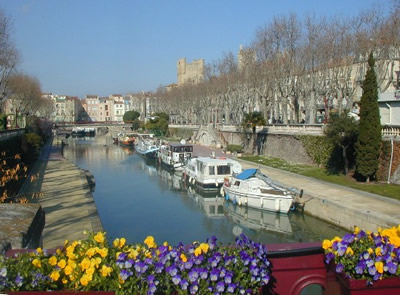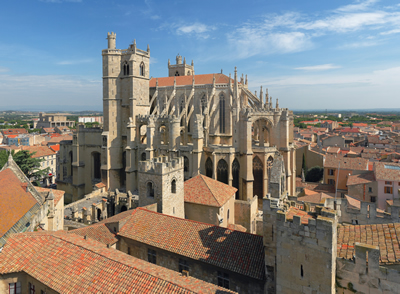|
|
Narbonne Introduction
Narbonne is a lovely town - relatively quiet, pretty, and with a canal running through the centre. Once the mighty capital of the Roman region of Narbonensis (Narbone was called Narbo at the time), it is now a smallish-sized city of about 60,000 people - benefitting from the area’s tourism (being close to beaches) and wine industries (being close to the superb Minervois and Corbières wine regions). It also boasts superb transport links - with the A9 motorway passing just outside the city limits, and Béziers, Perpignan and Carcassonne airports not far away.
The city itself has a relaxed feel - being much smaller than Montpellier and even Perpignan. The shops and restaurants in the centre are good - and there are a number of ‘brocantes’ selling inexpensive antiques. Narbonne was the birthplace and home of French singer Charles Trenet and is now home to the RC Narbonne rugby team.
History
Built 118 BC as a Roman trading post along the busy Via Dolmitia linking Italy with Hispania, Narbonne became the capital of the Roman province of Narbonensis and one of the most important cities in southern Gaul.
When the Romans left, Narbonne became the Visigoth capital in the sixth century. Nothing of note happened in the medieval period (except, perhaps, the crusade against the local Cathars) - but in the 19th century, the advent of the railway and the growth of the local wine industry saw more development in the town and surrounding area.
Attractions
The Narbonne Property Market
Narbonne is in the Aude department, and property here is slightly less expensive than neighbouring Hérault. Most foreign buyers look for properties beyond the city centre of Narbonne - in one of the many wine-making villages that spread out along the coast and inland. Some villages are particularly pretty especially those along the Canal du Midi, for example, Paraza, Roubia, Sallèles D'Aude, Homps and Le Somail - all of which are still only 30 minutes from the beaches and all of which have excellent access to airports, motorways and the french rail system.
The Canal de la Robine runs through Narbonne itself, hooking up with the famous Canal du Midi just north of the city - and villages along these canals are particularly popular. The coast here is a little flat and quite developed - so many foreign buyers prefer to purchase properties inland.
In Narbonne itself, there are smart town houses to be had - although finding one with any outside space can be tricky. A better bet would be to buy a small maison de village in one of the villages just outside the city, or a detached property in the countryside. |

